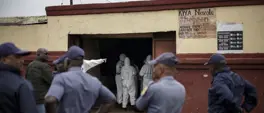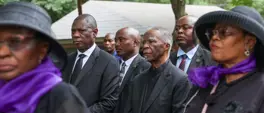Experts shed more light on rare Eastern Cape meteorite
Mongezi Koko and Nica Richards
3 September 2024 | 14:22The bike-sized meteor could be seen during the day before it made its finally landing in the Eastern Cape.
JOHANNESBURG - Experts from three major South African universities have gathered to discuss a meteorite that pierced through the Earth's atmosphere in the Eastern Cape at the end of August.
The bike-sized meteorite landed in the Eastern Cape just before 9am on 25 August, and although not the first of its kind, the phenomenon garnered great public interest.
ALSO READ:
Experts believe the bolide rock could be from the parent body of an achrondite. If this is confirmed, which can only be done on a microscopic scale, it means the meteorite that stunned social media may have formed millions of years after the formation of our solar system.
Estimated to be around 1.5 meters in diameter, with an energy release equivalent to 92 tons of TnT, the bolide rock, which was travelling at 20.1 km/s, made its presence felt at an altitude of 38km.
A bolide is a special type of fireball that explodes in a bright terminal flash that is often fragmented. A fireball, on the other hand, is a very bright meteor, while a meteor is a brief light streak caused by a piece of space debris burning up in the atmosphere.
It travelled approximately 50km, from west to north, in 2.8 seconds.
In totality, the event took 49 seconds before slowing down and making impact with water between Gqeberha and George, causing boom-like sounds.
A meteor breaking and burning up in the atmosphere near St Francis Bay, Eastern Cape pic.twitter.com/08N67Nq5kQ
— RawNews1st (@Raw_News1st) August 25, 2024

Fragments collected from the Gqeberha meteorite. Picture: YouTube screenshot
Despite eventually descending into the sea, fragments were found scattered on land.
One citizen scientist who contributed significantly to the work now being done by scientists from a variety of fields was a 9-year-old girl who happened upon a few rocks.
At least 150 eyewitness sightings have been received by scientists working on this case, with people who may have not reported seeing the incident encouraged to come forward.
Professor Richard Gibson from Wits University lauded the teams involved, saying although they were getting little to no sleep, heritage was integral in such a rare eyewitness encounter.
The proposed name of the meteorite is Nqweba - although this still needs to be approved by the Meteocritical Society's Nomenclature Committee.
The last meteorite falls in South Africa occurred in Lichtenburg in 1973. Only 51 meteorites have been documented in the country.
The bolide is the 20th reported globally so far.













